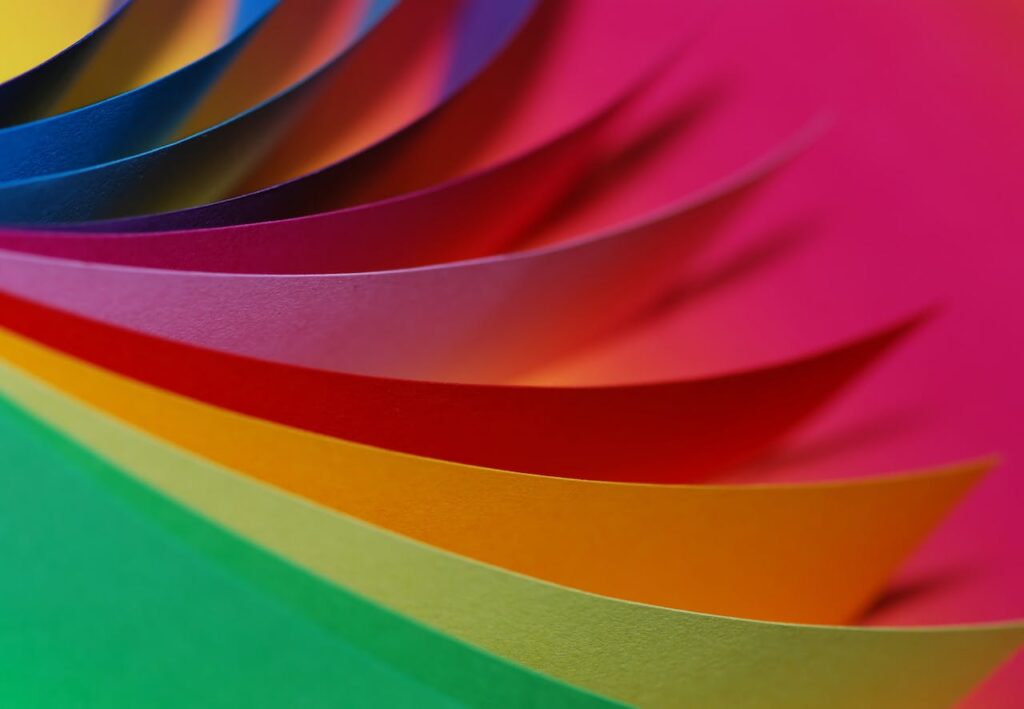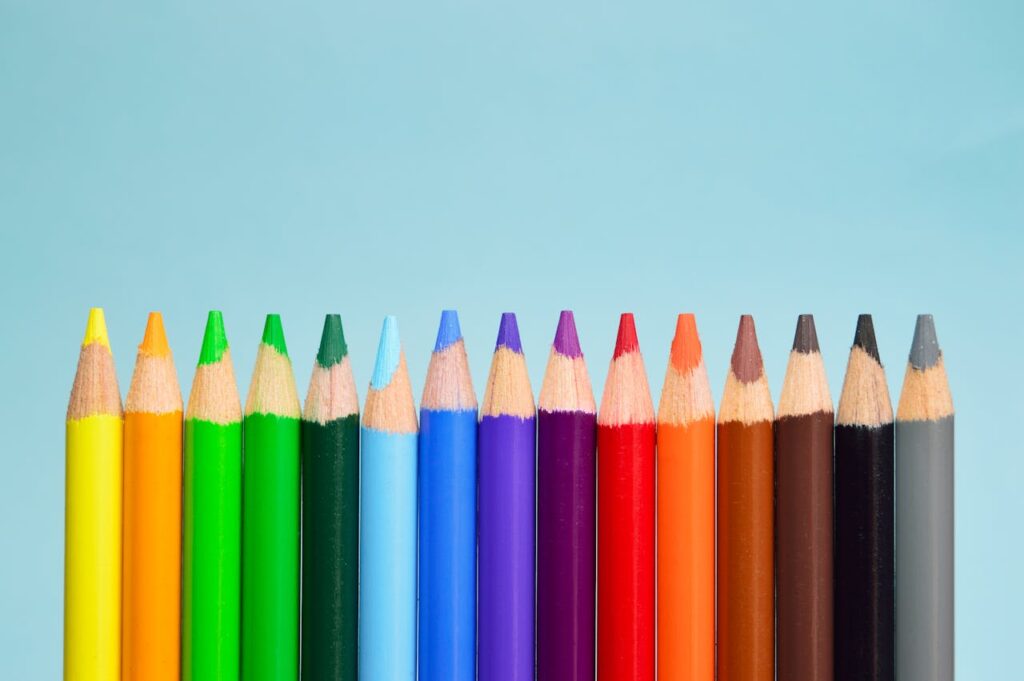30 Fun Facts About Colors: The Vibrant World Around Us
Colors play a crucial role in our daily lives, influencing our mood, decisions, and even our communication. Beyond their aesthetic appeal, colors are steeped in science, history, and psychology, offering a rainbow of interesting tidbits. Let’s dive into 20 fun facts about colors to appreciate the hues that color our world.

- The Most Visible Color: Among the plethora of fun facts about colors, the visibility of bright yellow stands out. It’s the most visible color in the dark, which is why it’s often used for cautionary signs and emergency rescue vehicles.
- Blue’s Rarity in Nature: Blue is one of the rarest colors in nature. This rarity is because few natural blue pigments exist, making the vivid blues of a peacock feather or a butterfly wing even more special due to their unique structural coloration.
- Colorful Currency: Countries use different colors in their currency to help people distinguish between various denominations easily. This practical application of color not only adds aesthetic value but also enhances functionality.
- The Color of Royalty: Purple has long been associated with royalty and luxury, thanks to its once exorbitant cost of production. The dye originally came from the Phoenician trading city of Tyre, which made it from thousands of crushed sea snails.
- Chromophobia: There’s a phobia for everything, including colors. Chromophobia is the fear of colors, illustrating how deeply personal and impactful colors can be on an individual’s psyche.
- The Power of Red: Red is the first color a baby sees after black and white. It’s a color that increases heart rate and is often associated with passion, energy, and danger, making it a powerful tool in branding and marketing.
- Green’s Calming Effect: Green is known for its calming and rejuvenating effects, mimicking the natural world and promoting a sense of tranquility and health. It’s no wonder that many hospitals and wellness brands incorporate green into their designs.
- No Natural Blue Food: Blue is the least appetizing color for food, with few naturally blue foods existing. This rarity is one reason why blue is sometimes used in diet plans to reduce appetite.
- Black and White: Technically, black and white are not colors but shades. Black is the absence of light, and white is the presence of all colors of light combined. This distinction highlights the complexity of how we perceive and categorize colors.
- The Invention of New Colors: New pigments are still being discovered and created, such as YInMn Blue, the first new blue pigment in over 200 years, discovered accidentally in 2009. This vibrant blue is making waves in art and design for its unique properties.

Fun Facts About Colors Part 2:
- Color and Taste Perception: Fun facts about colors include their influence on taste perception. For example, food coloring can affect how we perceive the taste and flavor of food, with certain colors enhancing sweetness, bitterness, or freshness.
- The Color Pink Doesn’t Exist: Technically, pink doesn’t exist in the spectrum of light. It’s a combination of red and violet, two colors at opposite ends of the visible spectrum that our brain creates as a way to make sense of this visual discrepancy.
- Ancient Greek’s Color Blindness: Ancient Greeks often described the sea as “wine-dark” and did not have a word for blue, leading some historians to speculate about their perception of color.
- The Impact of Color on Memory: Studies have shown that colors can significantly impact memory retention and recall. Bright colors like orange, red, and yellow are more likely to be remembered than dull colors.
- Color Names Around the World: Not all cultures divide the color spectrum in the same way. For example, the Himba tribe in Namibia has numerous names for green but no distinction between blue and green, illustrating the cultural relativism of color perception.
- The Healing Colors: Certain colors are believed to have healing properties. Blue is thought to soothe illnesses and treat pain, while red is used to stimulate the body and mind.
- Color Symbolism in Flags: Colors used in national flags have deep meanings. Red often symbolizes bravery and strength, white for peace and purity, and blue for freedom and justice, among others.
- Colorful Language: Many languages use colors metaphorically to convey emotions or conditions, such as “feeling blue” for sadness or “green with envy,” showing how deeply intertwined color is with human expression.
- The Most Popular Car Color: For many years, silver and black have vied for the title of the most popular car color in the world, although recent trends have seen white taking the top spot due to its association with modernity and simplicity.
- The Universality of Color Associations: Despite cultural differences, some color associations are almost universal. For example, red is consistently associated with love and aggression across cultures, showcasing the innate responses humans have to certain colors.

Interesting Facts About Colors Part 3:
- Invisibility of Color in Darkness: One of the intriguing fun facts about colors is that they become invisible under complete darkness. Without light, our cone cells (responsible for color vision) don’t activate, rendering colors indiscernible and everything appears in shades of gray.
- The First Color Photograph: The world’s first color photograph was taken by James Clerk Maxwell in 1861. It was a tartan ribbon, demonstrating the additive color method and laying the groundwork for modern color photography.
- Colors Can Influence Perception of Time: Some studies suggest that colors can influence our perception of time. Warm colors like red and yellow are thought to make time seem to pass more quickly, while cool colors like blue and green can make time feel slower.
- Color and Sports Performance: Wearing red has been linked to higher success rates in sports. Research indicates that teams wearing red uniforms are more likely to win competitions, possibly because red is perceived as dominant and aggressive.
- The Most Expensive Pigment: Lapis Lazuli, a vibrant blue pigment, was once considered more valuable than gold. Sourced from Afghanistan, it was used in some of the most exquisite art pieces of the Renaissance and was a symbol of prestige and divine favor.
- Color Can Affect Body Temperature: Surrounding colors can influence body temperature; red environments can raise your body temperature, while blue environments can lower it. This physical response to color has implications for interior design and clothing choices.
- Animals and Color Vision: Not all animals see colors the way humans do. Dogs, for instance, see the world in a limited range of colors, primarily blues and yellows, while birds can perceive ultraviolet light, revealing patterns in feathers and plants invisible to humans.
- Synesthesia: A fascinating condition called synesthesia blends senses together. Some people with synesthesia associate specific colors with numbers, letters, or sounds, experiencing the world in a uniquely colorful way.
- The Impact of Color on Learning and Concentration: Fun facts about colors include their role in learning environments. For example, orange is believed to enhance concentration and blue can stimulate creativity, leading to strategic use of colors in schools and workspaces to maximize productivity and innovation.
- Color Therapy: Also known as chromotherapy, color therapy uses colors and their frequencies to heal physical and emotional problems. Proponents believe that different colors correspond to different parts of the body and emotions, offering a non-invasive way to promote overall well-being.
These fun facts about colors only scratch the surface of the fascinating world of hues and shades that enrich our lives. From the science behind color perception to the emotional and cultural significances tied to each shade, colors continue to fascinate and influence us in myriad ways.
Frequently Asked Questions About Colors
1. What is color?
Color is a visual perception that results from the way an object interacts with light and is perceived by the human eye and brain. The properties of light such as wavelength, frequency, and photons determine the color we see. Colors are often described using the color spectrum, visible to humans as red, orange, yellow, green, blue, indigo, and violet.
2. How do we see color?
We see color thanks to the photoreceptors in our eyes called rods and cones. Rods are more sensitive to light and dark changes, shape, and movement and are not good for determining color. Cones are responsible for color vision and function best in bright light. There are three types of cones, each sensitive to one of the three primary colors (red, green, or blue), and the brain combines signals from these cones to produce the full spectrum of colors.
3. Why are colors important?
Colors are important for numerous reasons; they can influence mood and psychological reactions, convey information, and signal action (like traffic lights). Colors also enhance the aesthetic appeal of our environment and are used in art and design to evoke certain feelings or tell a story. Furthermore, colors play a crucial role in safety, branding, and marketing by creating visual distinctions and emotional connections.
4. Can colors affect mood and behavior?
Yes, colors can significantly affect mood and behavior. Different colors can evoke different feelings; for example, blue can have a calming effect, while red might increase energy levels or appetite. The psychological impact of color is used in color therapy, marketing, and interior design to influence human behavior and emotional well-being.
5. Why do we have favorite colors?
Individual preferences for certain colors can be attributed to personal experiences, cultural influences, and psychological factors. Favorite colors can be linked to memories, emotions, or how a particular color makes one feel. Additionally, societal trends and personal associations with certain colors can play a role in determining favorite colors.
6. What is color blindness?
Color blindness, or color vision deficiency, is the inability or decreased ability to see color or distinguish between differences in color. This condition is often genetic and occurs when one or more of the color cone cells are absent, non-functioning, or detect a different color than normal. The most common types of color blindness are red-green color blindness, followed by blue-yellow color blindness and total color blindness, which is rare.
7. How do colors influence marketing and branding?
Colors are a powerful tool in marketing and branding because they can influence consumer perceptions and emotions. Certain colors are associated with specific traits (e.g., blue with trust and security, green with health and nature) and can affect brand identity and consumer behavior. Brands carefully select colors that align with their values and target audience to enhance brand recognition and emotional connection.ormal. The most common types of color blindness are red-green color blindness, followed by blue-yellow color blindness and total color blindness, which is rare.
8. Are there cultural differences in color perception?
Yes, cultural differences significantly influence color perception and symbolism. Colors that are considered positive and lucky in one culture may have negative or different associations in another. For example, white is often associated with purity and weddings in Western cultures but is traditionally worn at funerals in some Eastern cultures. Understanding these cultural nuances is important in global communication and design.
9. What is the rarest color in nature?
Blue is considered one of the rarest colors in nature because it is seldom found in natural pigments. Most blue hues in nature, such as those seen in the sky, water, and some flowers, are the result of structural coloration rather than pigment. True blue pigments in the biological world are rare and often highly sought after.
10. Can colors change over time?
Yes, colors can change over time due to factors like fading, aging, and exposure to light or chemicals. Materials and pigments may degrade or react over time, causing the color to fade or alter. This is a common concern in art conservation, textiles, and manufacturing, where longevity and color stability are important.













